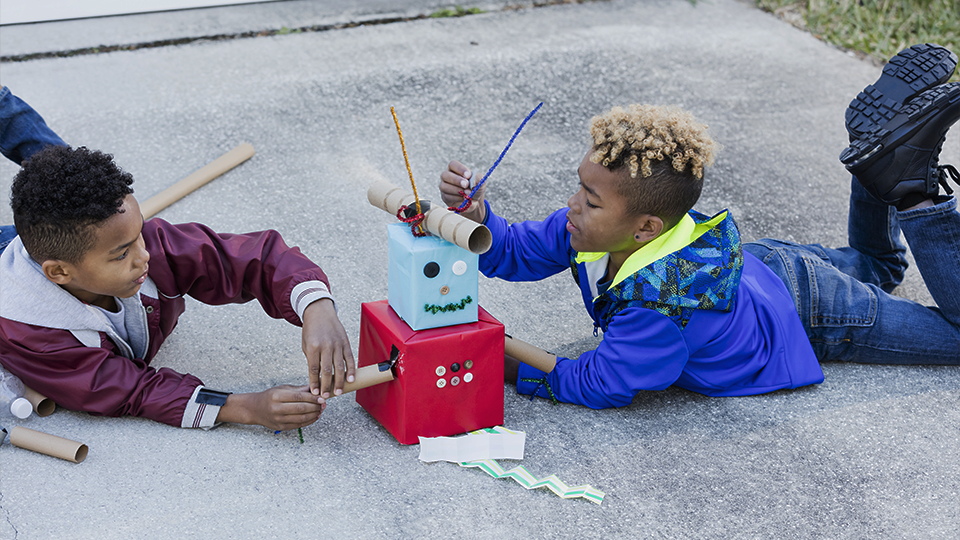
Engineer it: Get Moving
Grades 3-5
Engineer it: Get Moving
Students will use cardboard and additional materials to construct two Skill Builder projects, then use an engineering design process of Learn - Design - Create - Test as they move on to engineering challenges. Students will become familiar working with cardboard by cutting it, making holes, and using things to fasten it together.
Thanks to the generous support from Flint Hills Resources this program is available at no cost to Science Matters participants. Thanks to the Clean Water Land and Legacy Amendment for supporting the development of virtual programs.
Program Length
Five stages of learning flexible to each teacher’s discretion
MN Academic Standards
MN Academic Standard Strand: The Nature of Science and Engineering (3.1.3.2, 3.1.3.4), (4.1.2.1, 4.1.2.2, 4.1.3.3)
Next Generation Science Standards
Disciplinary Core Ideas: Defining and Delimiting Engineering Problems (3-5-ETS1-1), Developing Possible Solutions (3-5-ETS1-2) (3-5-ETS1-3), Optimizing the Design Solution (3-5-ETS1-3)
Science and Engineering Practices: Asking Questions and Defining Problems (3-5-ETS1-1), Planning and carrying out investigations (3-5-ETS1-3), Constructing Explanations and Designing Solutions (3-5-ETS1-2)
Crosscutting Concepts: Influence of Engineering, Technology, and Science on Society and the Natural World (3-5-ETS1-1, 3-5-ETS-2)
Learning Goals
Engineers design solutions (products, processes, and systems) to meet human needs and wants.
Engineering design is a systematic and iterative approach that includes the following:
Understanding problems and defining criteria and constraints,
Developing and Testing possible solutions,
Determining an optimum solution given the current understanding of criteria and constraints).
People live in a designed world in which technology and society affect each other and the natural world.